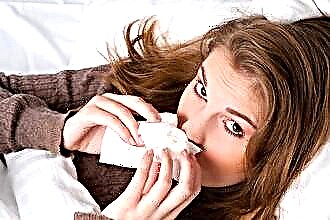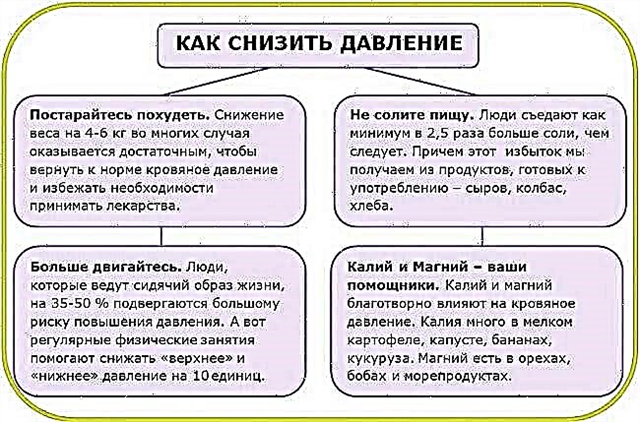Inflammation of the mucous membranes of the sphenoid sinus, or sphenoiditis, is a fairly common disease that is present in acute or chronic form in almost 20% of children and about 15% of adults. The statistics are disappointing, and the actual number of patients may be even higher, since the disease is difficult to diagnose at an early stage. And the treatment of sphenoiditis should be started as early as possible, since in its chronic form it can provoke serious complications.
Main reasons
 The main causative agents of sphenoiditis are various viruses and bacteria that infect the epithelial cells of the sphenoid sinus and trigger the disease. They can enter the body when inhaled through the nasal cavity or from the inside, when the virus has been present in the body for a long time (with syphilis, gonorrhea, tuberculosis and other serious diseases).
The main causative agents of sphenoiditis are various viruses and bacteria that infect the epithelial cells of the sphenoid sinus and trigger the disease. They can enter the body when inhaled through the nasal cavity or from the inside, when the virus has been present in the body for a long time (with syphilis, gonorrhea, tuberculosis and other serious diseases).
As a result of inflammation, the mucous membrane swells greatly and the narrow passage connecting the sphenoid sinus and the nasal canal is partially or completely blocked. The cavity begins to fill with fluid or pus, irritating the nerve endings of the mucous membranes and provoking severe pain inside the skull, which is the main symptom of the disease.
However, other factors can also provoke the inflammatory process:
- severe curvature of the nasal septum;
- narrowness of the nasal passages;
- the small size of the sphenoid sinus itself;
- constantly polluted air;
- injuries to the bones or the back of the nose;
- recent nose surgery;
- neoplasms inside and near the sinus;
- foreign bodies trapped in the nose;
- chronic respiratory diseases;
- frequent colds;
- severe or frequent allergic reactions.
Reduced immunity contributes to a more active course of the inflammatory process, and in this case, treatment with strong medications will help to overcome sphenoiditis.
But in the early stages, even treatment at home using folk methods can cope with an uncomplicated disease. It is only important to have time to recognize it in time.
Typical symptoms
 As already noted, the first symptom of sphenoidal rhinosinusitis is a specific headache. It has a fairly clear localization - in the back of the head, as if in the depths of the skull. But with a chronic form of the disease and damage to nearby tissues, it can be given to the periorbital region or forehead.
As already noted, the first symptom of sphenoidal rhinosinusitis is a specific headache. It has a fairly clear localization - in the back of the head, as if in the depths of the skull. But with a chronic form of the disease and damage to nearby tissues, it can be given to the periorbital region or forehead.
A characteristic feature of the disease is increased headaches at night, when the body is in a horizontal position, in which the outflow of mucus accumulated in the sinus is even more difficult. The head hurts more severely when the temperature or air pressure rises, as the pressure on the nerve endings increases.
Depending on the characteristics of the course of the disease and the presence or absence of complications, other symptoms may also be present:
- irritability, nervous conditions;
- persistent or recurrent sleep disorders;
- decreased appetite, possible weight loss;
- signs of general intoxication: weakness, nausea, dizziness;
- absent-mindedness, inability to concentrate, memory loss;
- decreased visual acuity, movement disorders of the eyes;
- mucous or purulent, thick discharge with an unpleasant odor;
- changes in the sensitivity of the skin in certain areas of the face or head.
Even with the acute course of the disease, a significant increase in body temperature is rarely observed. More often it fluctuates in the range of 37.2-37.5, only occasionally crossing the 38 mark.
With the simultaneous presence of two or more of the above symptoms against the background of frequent headaches, you should immediately consult a doctor.
Diagnosis of the disease
Treatment of sphenoiditis should begin with a high-quality diagnostic examination, first of all, with a visit to the otolaryngologist. He will conduct a visual examination of the larynx and nasal cavity, palpation of the lymph nodes, make a rhinoscopy and take mucus samples for laboratory analysis for microflora.
Most likely, the doctor will be able to establish the reasons that provoked the disease, as well as find out whether it is primary or already advanced and complicated. It may be necessary to establish the final clinical picture:
 a general blood test, the indicators of which reveal the presence of active inflammatory processes in the body, as well as the general condition of the patient;
a general blood test, the indicators of which reveal the presence of active inflammatory processes in the body, as well as the general condition of the patient;- X-ray of the skull and / or nasal sinuses - the picture shows how much the cavity is filled with pus and whether the inflammation has spread to other organs, as well as whether cysts, polyps and other neoplasms are its provocateurs;
- computed tomography study - allows you to assess the size of the sphenoid sinus, determine the degree of mucosal damage and see many other important details.
During the analysis of mucus for microflora, doctors can not only find out which microorganisms attacked the mucous membranes, but also select the most effective antibacterial drugs for their destruction.
Based on the results of the studies, the doctor decides whether it is necessary to treat sphenoiditis with potent medications or whether a home regimen and the use of proven folk remedies will be enough. Although most often the most effective method of therapy is a combination of traditional and traditional methods of treatment.
Traditional methods
Traditional methods of treatment can be used only at an early stage of the disease or in cases where antibiotic therapy is contraindicated for medical reasons (severe allergies, pregnancy, etc.). But even in this case, it is better to be treated under the supervision of a doctor, since the disease progresses rapidly and becomes chronic.
The most effective home treatments are:
- Washing with a decoction of chamomile, calendula or celandine. These herbs have powerful anti-inflammatory properties and are able to quickly relieve mucosal edema. To prepare a strong broth, you need 1 large spoonful of the crushed plant, steam with a glass of boiling water, boil over low heat for 5 minutes. Pour into a thermos, leave for 1-1.5 hours, strain through several layers of gauze. Rinse your nose by drawing in the decoction of each nostril in turn or using a baby syringe.
 Freshly squeezed beet juice with honey. It has antibacterial, anti-inflammatory, analgesic effect, relieves swelling, accelerates the restoration of damaged epithelium. Grate the beets on a fine grater, squeeze the juice through several layers of cheesecloth and mix with an equal amount of honey. To drip for adults 5-7 drops in each nostril, for children 3-5 several times a day.
Freshly squeezed beet juice with honey. It has antibacterial, anti-inflammatory, analgesic effect, relieves swelling, accelerates the restoration of damaged epithelium. Grate the beets on a fine grater, squeeze the juice through several layers of cheesecloth and mix with an equal amount of honey. To drip for adults 5-7 drops in each nostril, for children 3-5 several times a day.- Rosehip decoction. Used as a strong anti-inflammatory and tonic agent that activates the immune system. To obtain the desired effect, drink it at least 0.5 liters per day. To prepare a concentrated broth, you need to pour 3 tbsp. tablespoons of dry berries 500 ml of boiling water and insist in a thermos overnight. And in a day to drink everything, but use it pleasantly warm.
- Potato juice with onions. Helps to neutralize pathogenic microorganisms, as it has powerful antibacterial properties, and potato juice perfectly relieves swelling and inflammation. Mix both freshly squeezed juices 1: 1 and drip 3-4 times a day, 5-6 drops in each nostril. Due to the strong burning sensation, it is not recommended for young children.
- Sea buckthorn oil.It has unique healing properties: it quickly relieves inflammation, restores mucosal cells, and has an antibacterial effect. You can instill in the nose several times a day for 5-6 drops or insert oil-soaked gauze turundas for 15-20 minutes before bedtime.
Many other ways to treat sphenoiditis with folk remedies can be found on the Internet. But you should not get too carried away with them - with a complicated and acute course of the disease, they will not help, but only delay the healing process.
Drug treatment
In the acute course of the disease with a large accumulation of pus in the sphenoid sinus and a strong increase in temperature, the patient is usually admitted to a hospital. There, an intensive course of drug therapy is prescribed, and if necessary, catheter lavage of the sphenoid sinus is performed, which should not be confused with surgery - this is a non-surgical method of treatment.
 Catheterization is necessary when the opening of the sphenoid sinus is completely blocked and there is no other way to remove the accumulated mucus outside. Then a thin catheter is inserted through the nasal passage into the sphenoid sinus, through which saline is supplied under pressure, which flushes mucus and pus from the cavity.
Catheterization is necessary when the opening of the sphenoid sinus is completely blocked and there is no other way to remove the accumulated mucus outside. Then a thin catheter is inserted through the nasal passage into the sphenoid sinus, through which saline is supplied under pressure, which flushes mucus and pus from the cavity.
After thorough washing, which can take up to 15 minutes, the patient is placed on his back and the necessary medications are injected into the sinus through the same catheter. After their introduction, the patient should try not to change the position of the body for 20 minutes. Then the catheter is removed, and the procedure, if necessary, can be repeated after 2-3 days.
Inpatient treatment also includes:
- antibiotic therapy - usually use "Amoxiclav", "Azithromycin", "Cefaxol" and other modern drugs;
- anti-inflammatory drugs - "Sinupret", "Ibuprofen", which relieve pain and reduce inflammation;
- vasoconstrictor drops - "Snoop", "Vibrocil", relieving swelling of the mucous membrane and restoring the patency of the sphenoid sinus;
- antifungal agents - prescribed to prevent the development of candidiasis while taking antibiotics;
- immunomodulators - "Nazoferon", "Immunal", which activate the body's immune defense.
Only the attending physician should choose specific drugs for the treatment of the patient and establish their dosage and duration of administration. In this case, no self-medication is acceptable, just like the use of folk remedies without the knowledge of the doctor.
It is also necessary to rinse the nose with saline solutions several times a day, for which it is better to use ready-made preparations: "Aquamaris", "Dolphin", etc. For preventive purposes, it is useful to rinse the throat with a solution of soda or furacillin.
The course of inpatient treatment is usually 7-10 days, and then continues on an outpatient basis until complete recovery.
Surgical intervention
 If, according to the results of the examination, it was found that polyposis formations became the cause of the disease, then any, even the most effective treatment will give only temporary results until the polyps are removed. And in this case, surgical intervention becomes necessary.
If, according to the results of the examination, it was found that polyposis formations became the cause of the disease, then any, even the most effective treatment will give only temporary results until the polyps are removed. And in this case, surgical intervention becomes necessary.
There is absolutely no need to be afraid of the operation. Modern equipment allows it to be carried out almost bloodlessly and almost painlessly, although it is performed in a hospital. Today, the most common treatment method is laser opening of the wedge-shaped cavity.
The scheme of the operation looks like this:
- Local or general anesthesia (usually local) is applied to the patient.
- The middle part of the turbinate is dissected with a laser scalpel.
- The part of the lattice labyrinth lying under it is dissected.
- An endoscope is inserted through the opening into the sphenoid sinus.
- A thorough visual examination of the inner lining of the sphenoid sinus is performed with the display of the image on the monitor.
- Removal of polyps or cutting of cysts is performed.
- The sinus is thoroughly washed with antiseptic and antibacterial solutions and closed with sutures.
The removed tissues must be sent for histological examination in order to exclude the possibility of the development of a malignant tumor.
The active recovery period after the operation lasts up to 7 days; you can completely return to a normal lifestyle in another week. If the operation is performed by an experienced surgeon in compliance with sterility, then complications are extremely rare.
Prevention methods
The disease is always easier to prevent than to cure, and especially this principle applies to the respiratory system. Their mucous membranes are very delicate, but they are the first to come into contact with negative environmental factors, taking the brunt of the blow: warming cold air, retaining particles of dust and dirt, not letting foreign bodies enter, neutralizing pathogens.
 A healthy respiratory system provides the entire body with vital oxygen, without which a person can only live for a few minutes. To keep the mucous membranes of the nose and paranasal sinuses healthy, it is enough to regularly follow simple preventive measures:
A healthy respiratory system provides the entire body with vital oxygen, without which a person can only live for a few minutes. To keep the mucous membranes of the nose and paranasal sinuses healthy, it is enough to regularly follow simple preventive measures:
- quit smoking and alcohol abuse;
- monitor the cleanliness and humidity of the air in residential and work premises;
- regularly carry out antifungal treatment of air conditioners and windows;
- do not use household chemicals uncontrollably;
- ventilate the premises at least 2 times a day;
- do not use cotton swabs to cleanse the nasal passages;
- do not exceed the recommended dosage of vasoconstrictor drugs;
- avoid constant strong manifestations of allergic reactions;
- take all possible measures to strengthen the immune system.
Foods that irritate the mucous membrane: spicy, acidic, with a large amount of chemical dyes can also provoke an inflammatory process in the nose and sinuses. It is better to include in the menu more fresh vegetables and fruits, rich in vitamins and antioxidants.
It is very important not to leave any respiratory diseases, even a banal runny nose, untreated.
Remember that when it becomes chronic, sphenoiditis can lead to serious complications such as meningitis, sepsis, partial or complete loss of vision, neurological and endocrinological disorders, and sometimes even death.

 a general blood test, the indicators of which reveal the presence of active inflammatory processes in the body, as well as the general condition of the patient;
a general blood test, the indicators of which reveal the presence of active inflammatory processes in the body, as well as the general condition of the patient; Freshly squeezed beet juice with honey. It has antibacterial, anti-inflammatory, analgesic effect, relieves swelling, accelerates the restoration of damaged epithelium. Grate the beets on a fine grater, squeeze the juice through several layers of cheesecloth and mix with an equal amount of honey. To drip for adults 5-7 drops in each nostril, for children 3-5 several times a day.
Freshly squeezed beet juice with honey. It has antibacterial, anti-inflammatory, analgesic effect, relieves swelling, accelerates the restoration of damaged epithelium. Grate the beets on a fine grater, squeeze the juice through several layers of cheesecloth and mix with an equal amount of honey. To drip for adults 5-7 drops in each nostril, for children 3-5 several times a day.

